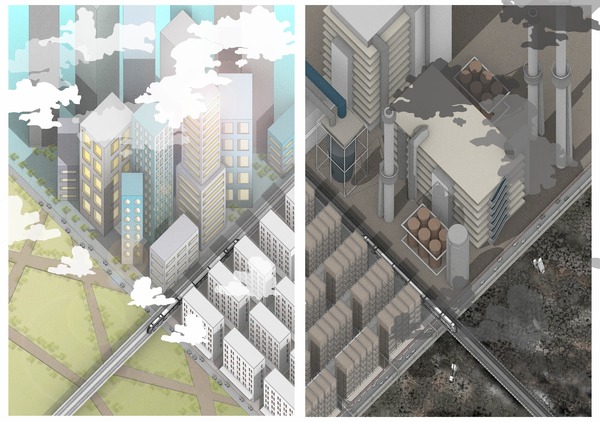The first part of the thesis scrutinizes the cognitive dissonance in environmental issues, i.e. what we believe (we should care about the environment) versus how we act (continue using disposable coffee cups). A series of interventions have been created to theorize and problematize the issues through an architectural lens. We can see that geographic distance contributes to the dissonance as when developing countries suffering from climate change are out of sight, people living in the developed countries put them out of mind.
In the second part, the project delves into various non-traditional sustainable spaces and explores the architect and architectural positions on environmental issues. From which we can see the architect’s guidelines on sustainable architecture mainly cater to the technical parts and neglect the wider definitions of sustainability.
In the third part, a critique is made on sustainable architecture in developed countries where green building standards are well established. With different kinds of sustainable building awards waiting for new architecture to achieve, the labelling and prizes seems to be dominated in the design process where decisions are often made to gain certain scores to be sustainable. Yet, if we reconsider the definition of sustainability from a global perspective, are we truly tackling the environmental issues directly? Have we optimized the money and resources? The project employs dual sites in the US and Vietnam to design health science campuses to explore the design and operational strategies for building design to achieve a wider definition of sustainability. The project made the two sites into Living Labs Partners, with the US campus acting as a central hub in the campus area whereas the Vietnam campus becomes a semi-public architecture that also serves the local community.


